The struggle is wheel for Leona Tuck and Michael Hennessy Cullen who love walking trails – well, those they can access. After a car accident at 19, Michael has a T9 spinal cord injury and uses a wheelchair to get around.
Living in Co Wexford overlooking Bannow Bay, they have the Tintern Trails on their doorstep. And with Michael tillage farming and Leona working in JFK Memorial Park and Arboretum in New Ross, the outdoors is where they are happiest.
Advocates for improved accessibility
Yes, the outdoors is where they are happiest. As long as they can access the outdoors. To promote accessible Irish adventures, Leona and Michael use Twitter and Instagram to document their travels. I spoke to them in October on Zoom (their second time using Zoom, so now they’re pros!), before Ireland went into Lockdown #2. They’re funny, engaging, understanding of the challenges facing trail developers, but passionate advocates about improving accessibility. And they’ve just celebrated their second wedding anniversary – congratulations, guys!
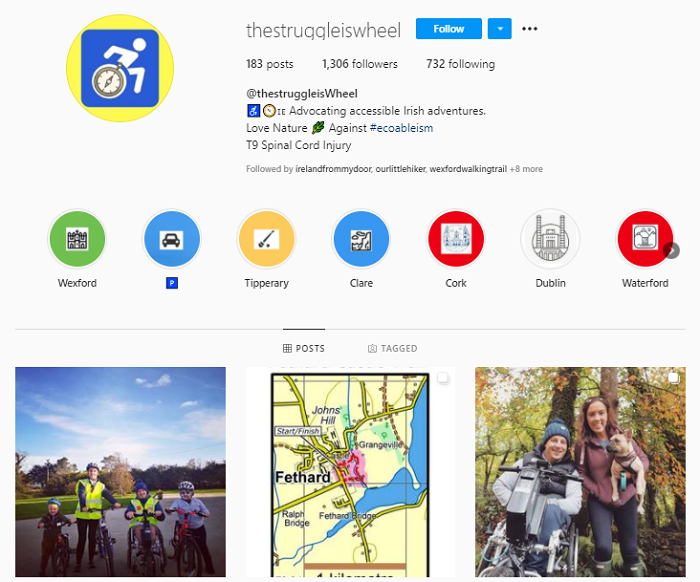
Accessibility comparison
It all started when they had totally different experiences accessing trails in the US and Ireland. On a visit to the John Muir coastal redwood park outside San Francisco, accessibility was simply not an issue. “There was a boardwalk through the woods and no steps,” said Michael. Leona adds that accessibility in the US is governed by legislation. “The Americans with Disability Act means that places have to be accessible. Our winter project is to look at the Irish Disability Act and see exactly what it contains.”
#mobilityforall
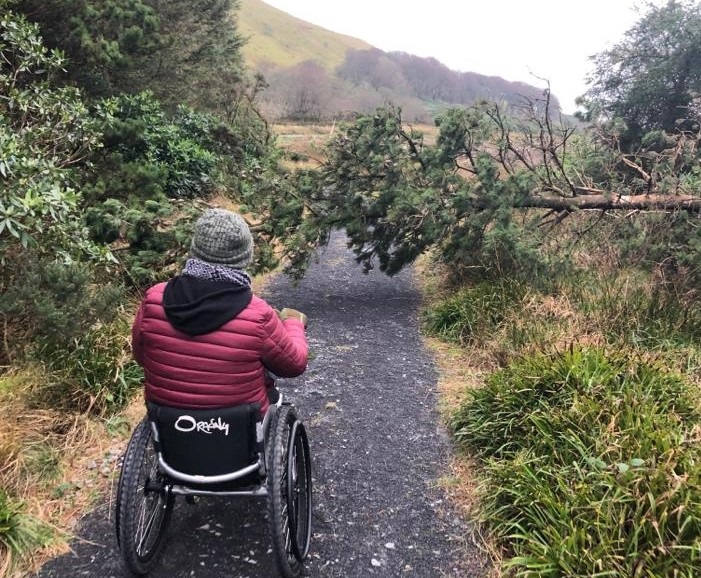
In Ireland, the couple came up against a fallen tree across a trail on a 4km looped walk in Co Sligo. “We were about 500 metres from the end of the trail, it was getting dark, it was winter, and we were faced with having to go all the way back,” said Leona. “I had to lift the tree for Michael to wheel himself under it.” Michael had to double over in the wheelchair to get through “with pine needles in my face”. The experience was “stressful”, said Leona, and motivated them to advocate for improved mobility for all.
“We feel we have a duty to alert people, so they don’t turn up at a trail and then can’t access it.”
Leona Tuck, the struggle is wheel
Since then, they have documented their travels and called the authorities to account – whether it was Coillte about the fallen tree, or the local authorities about a boulder narrowing a trail exit. They were recently successful in highlighting a poorly placed wheelchair accessible signpost that prevented wheelchair users opening the full wingspan of their door. “We’re always conscious that trails are often developed by community organisations and that tourism is badly affected now, but we feel we need to highlight the good and the bad,” said Michael. Leona adds: “We get feedback from young mothers as well as wheelchair users, so we feel we have a duty to alert people, so they don’t turn up at a trail and then can’t access it.”
Favourite accessible trail
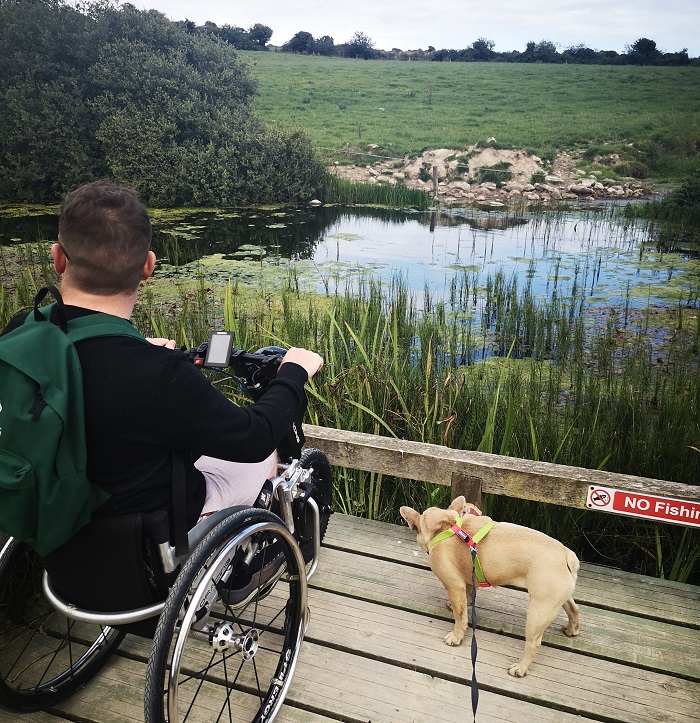
Today, they rank the 5km Anne Valley Walk, Dunhill, Co Waterford as their favourite trail. “There was a wheelchair sign in the car park, a wide path, the viewing areas looking out over the wetlands were not too high and the fences weren’t too high,” said Leona. Michael adds in that there was an information panel for wheelchair users in the car park, “so there was a lot of information before you start the trail. There were no stiles, the terrain was consistent, the bridges were accessible”.
What’s interesting about their feedback is that able-bodied people usually don’t give a second thought to accessibility. Unless you are with someone who has mobility issues or you’re a parent pushing a buggy, we assume that the trails we love will be loved by everyone.
Barriers to accessibility
“It’s frustrating that the entry to a lot of trails is inconsistent. Some are fine, some are not but, very often, you won’t know that until you get there.”
MICHAEL HENNESSY CULLEN, THE STRUGGLE IS WHEEL
But they can’t love those trails if there are barriers in place to prevent them even getting on to the trail. “For instance, we prefer swing wooden gates that you can push either way – stiles can be too narrow for wheelchairs,” said Michael. “I have a narrow wheelchair – 63cm wide – so I can get through a lot of gaps. But a mobility scooter wouldn’t be able to make the turns in a stile. That’s frustrating – and it’s frustrating that the entry to a lot of trails is inconsistent. Some are fine, some are not but, very often, you won’t know that until you get there.”
In addition, wheelchair users have to live with the side of the wheelchair getting scratched navigating stiles and narrow gaps. “Trail promoters should upload images of the entrances onto their websites, so that wheelchair users and their families know in advance.”
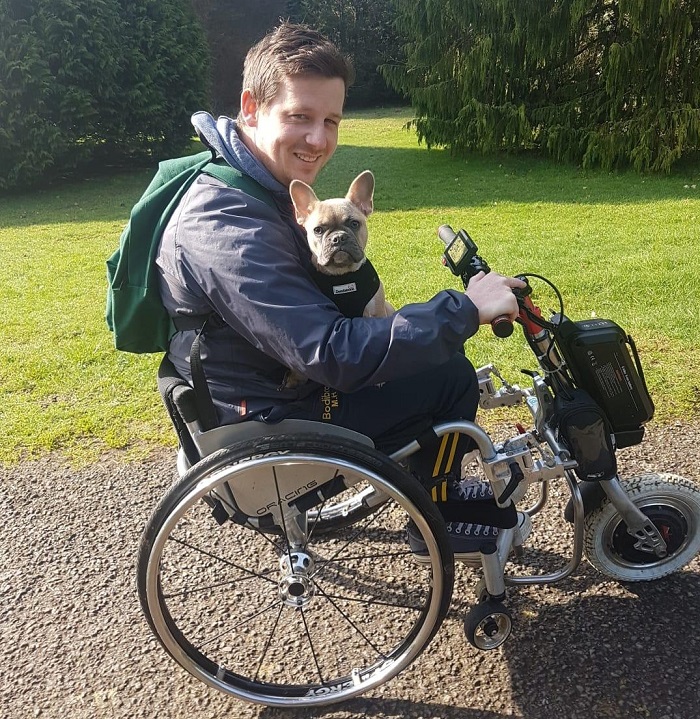
Leona adds that navigating entrances or gateways en route can be “embarrassing”. “You have other walkers looking at you,” she said, with Michael echoing his earlier comment, “and that’s frustrating”.
Advancements in technology
Many trails have not caught up with the advancements in technology around wheelchairs, said Michael. “Attachments have come out in the last four or five years that mean wheelchairs can navigate rougher terrain and bigger gradients. But the mindset is that these terrains are not accessible to wheelchairs anyway, so there’s no need to change them.”
Leona adds an interesting comment: “Not being able to access the trails together is secondary discrimination – associative discrimination. I’m not going to go ahead with friends and ask Michael to wait for me. So, there’s access anxiety when we are going somewhere or planning to meet friends – we have to work out is it accessible for both of us?”
Equal access
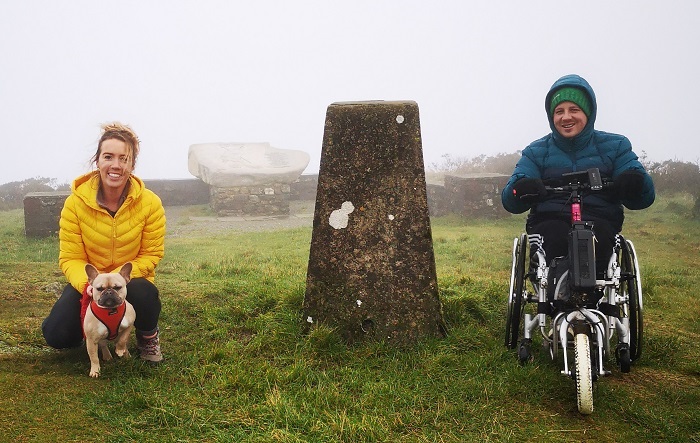
There’s no doubting that Ireland has fantastic walking trails through woodland and along our coastline. But it’s not really fair if those views are only accessible to some of the population. Or to half a couple. Or some of the family.
Michael and Leona have decided to advocate for their right to enjoy together the bounty of Ireland’s Ancient East. To visit the wonders of the Wild Atlantic Way, to see a city at the same time. That’s their right, the same as the rest of us.
Top 3 accessibility tips
- Access aisles between cars
Design parking spaces for wheelchair users with plenty of space between them. Wheelchair users need to open car doors fully to get into and out of the car. So, narrow spacing between cars just doesn’t work.
2. Make walking trail entrances wide enough
If a mobility scooter can go through a stile or entrance, then everyone will be able to do so. Design stiles so that they are deep enough to allow a wheelchair or mobility scooter to make the necessary turns. Every trailhead entry point should have the same dimensions. That way, wheelchair users could be confident that they can easily pass through whatever awaits them at the entrance.
3. Compacted surface
Uneven surfaces are difficult for everyone, but particularly if you are a wheelchair user, or someone with mobility issues, or pushing a buggy. So, compacted surfaces work for everyone.


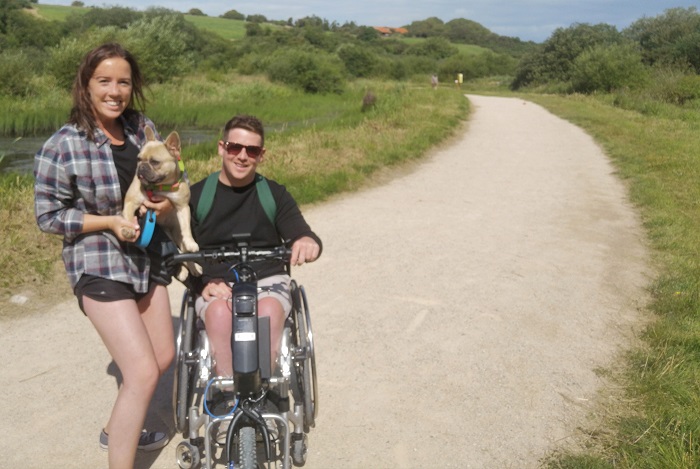
Good stuff – well done you. We are all getting closer to the time when we will need better access paths so we can enjoy the great Irish outdoors – best wishes Ann & Nick
That is so true – and what improves accessibility for one improves it all. Thank you taking the time to drop by.